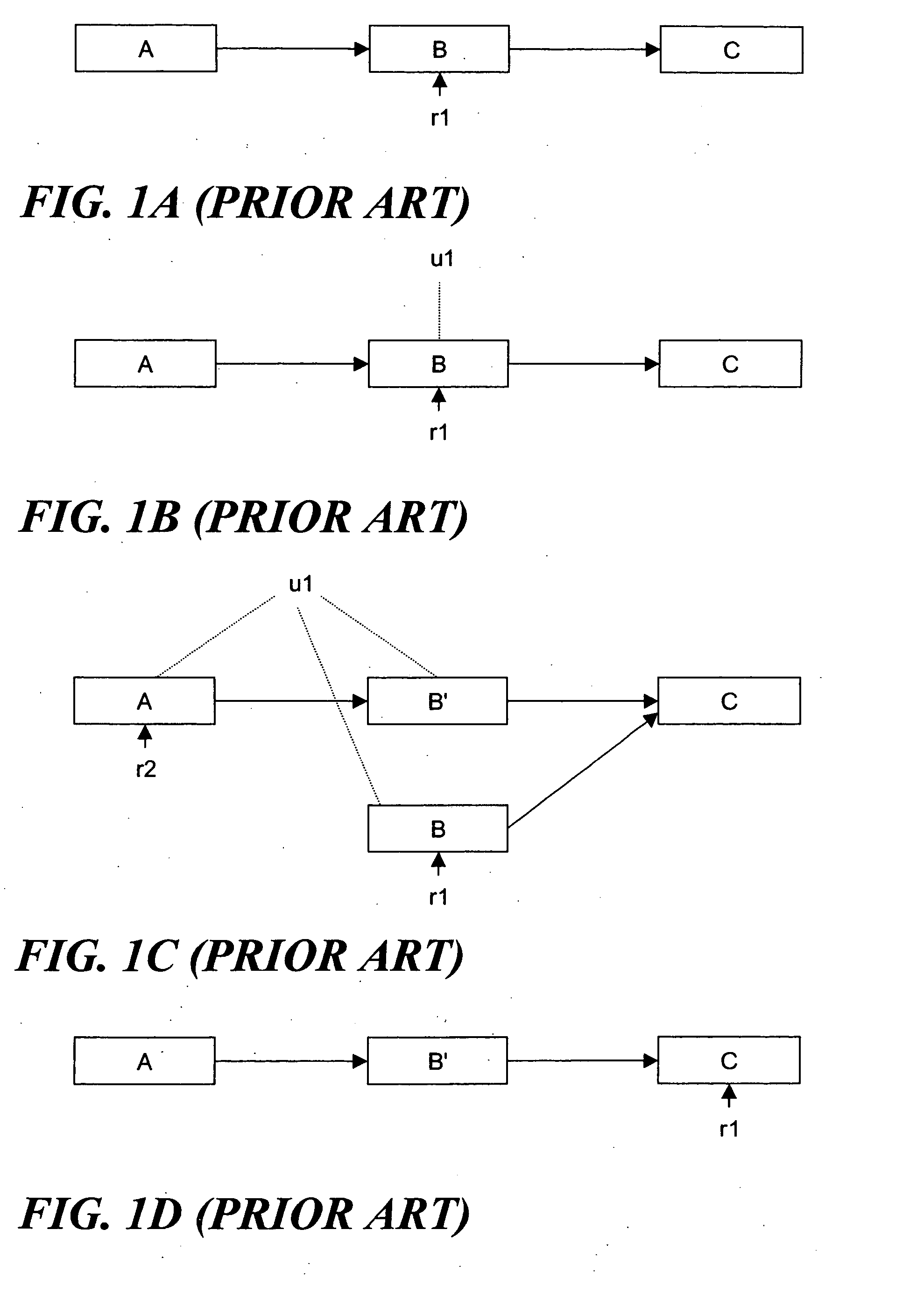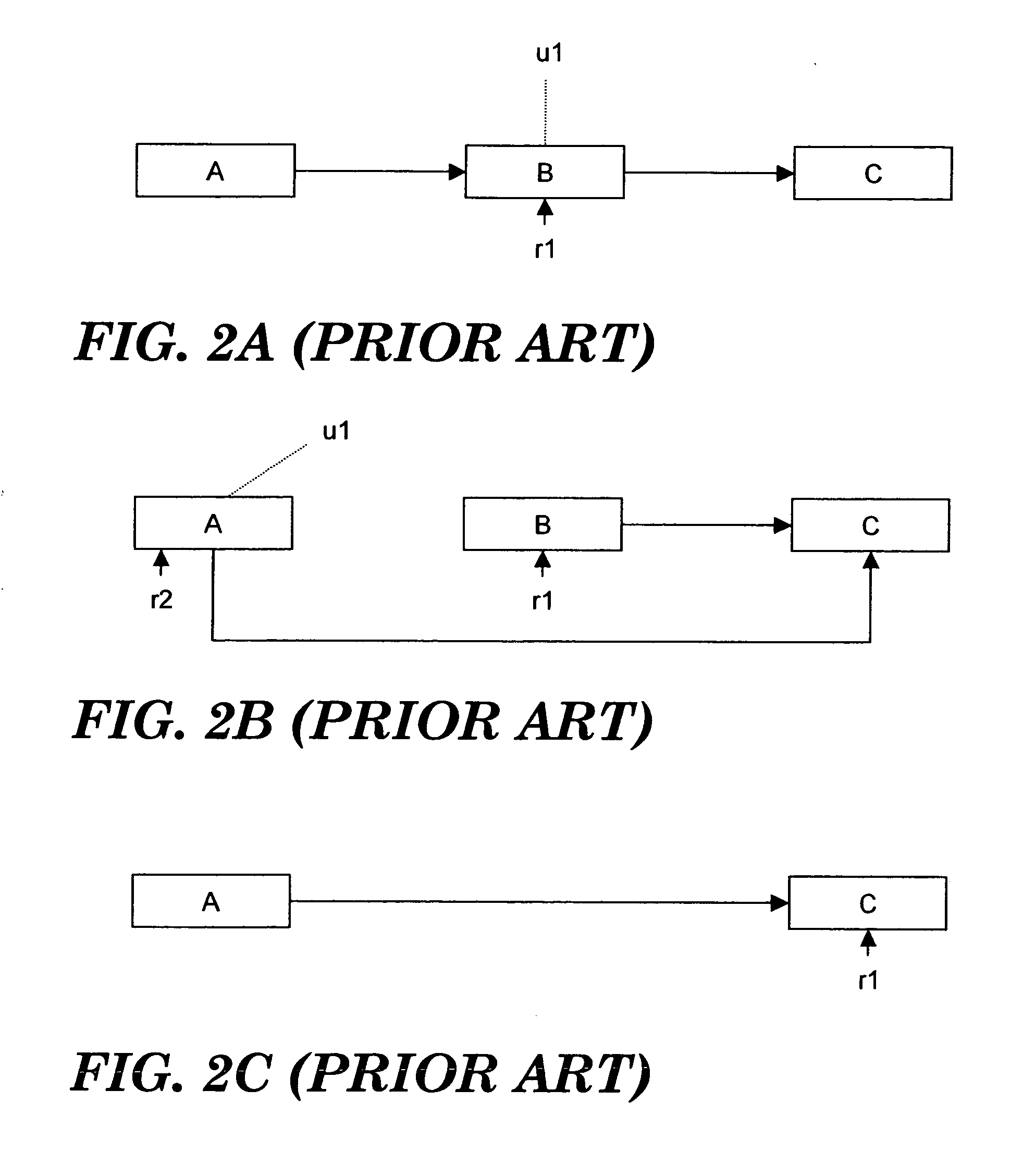Efficient support of consistent cyclic search with read-copy-update
a cyclic search and efficient technology, applied in the field of computer systems and methods, can solve the problems of insufficient consistency of a particular state, reader seeing inconsistent, and possibly nonsensical finite state machines, and the burden of read-side lock acquisition
- Summary
- Abstract
- Description
- Claims
- Application Information
AI Technical Summary
Benefits of technology
Problems solved by technology
Method used
Image
Examples
Embodiment Construction
[0040] Turning now to the figures, wherein like reference numerals represent like elements in all of the several views, FIG. 4 illustrates an exemplary computing environment in which the present invention may be implemented. In particular, a symmetrical multiprocessor (SMP) computing system 2 is shown in which multiple processors 41, 42 . . . 4n are connected by way of a common bus 6 to a shared memory 8. Respectively associated with each processor 41, 42 . . . 4n is a conventional cache memory 101, 102 . . . 10n and a cache controller 121, 122 . . . 12n. A conventional memory controller 14 is associated with the shared memory 8. The computing system 2 is assumed to be under the management of a multitasking operating system adapted for use in an SMP environment. It is further assumed that plural kernel processes executing on the several processors 41, 42 . . . 4n will, from time to time, concurrently reference a shared set 16 of data elements stored in the shared memory 8. For purpo...
PUM
 Login to View More
Login to View More Abstract
Description
Claims
Application Information
 Login to View More
Login to View More - R&D
- Intellectual Property
- Life Sciences
- Materials
- Tech Scout
- Unparalleled Data Quality
- Higher Quality Content
- 60% Fewer Hallucinations
Browse by: Latest US Patents, China's latest patents, Technical Efficacy Thesaurus, Application Domain, Technology Topic, Popular Technical Reports.
© 2025 PatSnap. All rights reserved.Legal|Privacy policy|Modern Slavery Act Transparency Statement|Sitemap|About US| Contact US: help@patsnap.com



